Rocket Lab says its second launch is possible tomorrow and lift off will be livestreamed, including on nzherald.co.nz.
The company delayed its test launch during the weekend because of poor weather but says it could take place from 2.30pm onwards. Weather for Mahia is forecast to be sunny with light winds although they might pick up later in the day.
Tuesday is also looking fine although the weather deteriorates from then.
In May the New Zealand-founded company successfully reached space in a global first from a private launch facility.
A communications glitch meant the flight had to be terminated before reaching orbit but Rocket Lab founder and chief executive Beck has said while thrilled with the first launch, the company has learned from thousands of pieces of data.
On Friday, Beck said ''the vehicle is very solid and the team's feeling very good. But it is a test flight and we've got more to learn.''
The 17m-tall Electron orbital launch vehicle will carry two Earth-imaging Dove satellites for Planet and two Lemur-2 satellites from Spire for weather mapping and ship traffic tracking.
If needed the company will launch a third test flight but it is keen to accelerate its transition into full commercial operations.
Rocket Lab says it has an advantage over larger competitors — some spun from space programmes developed by superpowers — because its smaller rockets can be launched more frequently from an area with very little air traffic.
If the it is 'go for launch' tomorrow road closures will be announced in the morning and an hour before launch aviation authorities will be advised to warn pilots of potential hazards.
A scrub may be called at any time because of weather or technical issues. This could occur as late as 0.1 seconds before lift off.
The launch will be monitored from Rocket Lab's mission control in Auckland and all site and launch safety is managed at range control 2.4km north of the launch pad.
The liquid oxygen-and-kerosene powered rocket will reach a speed of 27,000km/h to reach orbit.
The climb will be slow at first, taking about three seconds to clear the four-storey launch tower, but as it becomes lighter it will accelerate, reaching a commercial airliner's typical cruising altitude in about a minute.
Observers on the ground may see the rocket turn and fly towards the southern horizon.
Just over eight minutes into its flight Electron's second stage will reach orbit.
Customers include Nasa, Planet, Spire and Moon Express.
Electron is an entirely carbon-composite vehicle that uses Rocket Lab's 3D-printed Rutherford engines. It is capable of delivering payloads of up to 150kg.
Quelle: nzherald
+++
Countdown to Rocket Lab's next test flight
A New Zealand company is hoping to launch a 17-metre-long rocket from Māhia Peninsula for the second time, tomorrow afternoon.
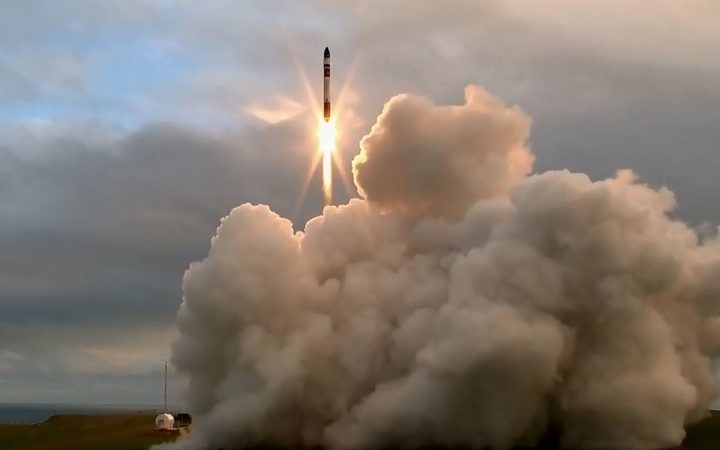
Rocket Lab's first test flight, in May, made it to space but failed to achieve orbit. Photo: Supplied / Rocket Lab
Rocket Lab opened the 10-day launching window on Friday but high winds have so far stopped the launch.
It is the second of three test flights as the company prepares to become a commercial operation.
People could watch the launch via a live stream on Rocket Lab's Facebook page or on YouTube.
Founder Peter Beck said he was optimistic about sending paying customers into space soon and said a space for a satellite on board the rocket would cost about $10 million.
Quelle: RNZ
---
Update: 11.12.2017
.
Still Testing launch window begins
POSTED ON 11 DECEMBER 2017
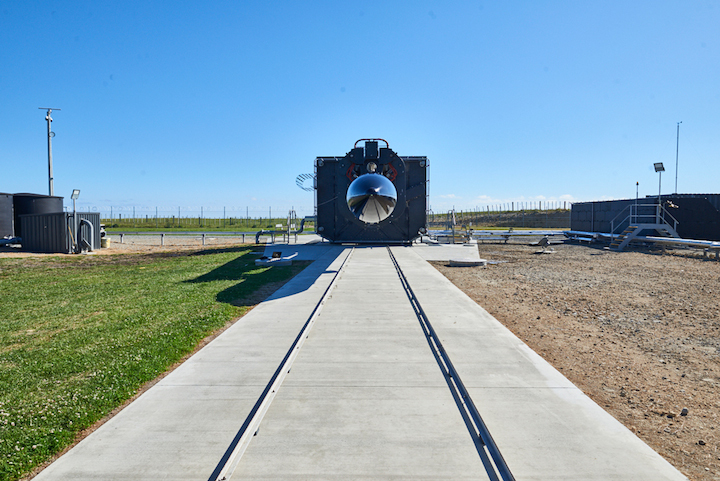
In the coming days we will attempt to launch the second Rocket Lab Electron rocket, Still Testing. As the name suggests, we are still very much in a test phase, but this flight is a significant milestone for our team and the next step in our mission to democratize space.
The potential of space to help us better understand our planet and improve life on it yet to be realised. The benefits of more satellites in low Earth orbit are almost endless, including crucial applications such as improved weather monitoring and natural disaster prediction, to internet from space. This increased and improved data will give companies and organisations better insights into our world, enabling them to make better decisions.
The main barrier to this future is frequency and cost of launch. With this flight we take a step towards changing that. We’re excited to share this step with the world by offering our first livestreamed launch attempt, viewable via our website.
I’d like to thank our customers Planet and Spire Global, for flying with us on Still Testing. Rocket Lab shares a strong ethos with them and it is my belief that by accelerating these companies’ access to orbit, we are initiating a paradigm shift in the use of space.
We’re at this milestone just months after our first test flight, which is a huge testament to the dedicated and innovative team working on the Electron program. They have achieved what many said was impossible, and in record time. I know they will continue to pour drive, dedication and passion into opening access to space.
Let’s get Electron on its way.
Cheers,
Pete
Quelle: Rocket Lab
+++
Rocket Lab launch cancelled six minutes into window
Rocket Lab postponed the launch of its second trial rocket until Tuesday after cancelling its launch on Monday afternoon.
Rocket Lab spokeswoman Morgan Bailey said the launch was cancelled due a mix of atmospheric conditions and space traffic.
The International Space Station flying through orbit coupled with the weather conditions gave a tight six minute window to attempt launch at 2.30pm, she said.
It will try to launch the Electron rocket, named 'Still Testing', from 2.30pm on Tuesday afternoon.
It could launch any time within the four hour launch window from 2.30pm to 6.30pm.
The cancellation comes after the 200 engineers at Rocket Lab's Māhia Peninsula launch site were feeling "pretty confident" on Monday morning.
'Still Testing', was due to launch from its Māhia Peninsula launch pad last week on Friday but high altitude winds and last minute preparations delayed launch to this week.
Bailey said the weekend was spent giving the 23-metre carbon-fibre rocket a "final check-up".
An imminent launch remained "weather and systems dependent", she said.
The company will live stream the launch for the first time. Stuff will cast the stream on Tuesday, the stream will begin 12 minutes before launch.
If successful, 'Still Testing' will fly through the atmosphere and within eight -and-a-half minutes, release three satellites the size of shoeboxes into orbit.
It will take "a bit longer" for the rocket to deliver information from 30,000 data points on the rocket back to the mission control station in Auckland, Bailey said.
The launch could be cancelled due to weather or technical problems, known as scrubbed, as late as one millisecond before lift-off.
It is the first time such a space mission has been attempted from New Zealand.
Deploying satellites is what the Electron rocket was built to do. This rocket has been four years in the making.
The satellites will gather information from space for United States companies Spire Global and Planet Labs.
Spire Global is mostly in the business of tracking ships and planes.
Planet Labs focuses on aerial photography but also markets its services to defence and intelligence agencies.
Rocket Lab launched its first Electron rocket, named 'It's A Test', in May this year, three days into its launch window.
Adverse weather delayed that flight too. It launched successfully but did not reach orbit as planned.
Timeline for launch:
Seven hours before launch: Emergency crews, local officials and Rocket Lab team are briefed and move into position for launch.
Six hours before launch: Road to the launch site closed.
Four hours before launch: Electron lifted to vertical position and filled with fuel.
Two-and-a-half hours before launch: Launch pad personnel exit area in preparation for launch.
Two hours before launch: Electron filled with liquid oxygen.
One hour before launch: Aviation authority advised to alert aircraft pilots of potential hazards.
Ten minutes before launch: Final preparations for launch commence.
Two minutes before launch: Autosequence commences and the Electron's on-board computers initiate the launch sequence.
Two seconds before launch: Ignition of the nine Rutherford engines powering Electron's first stage.
Launch: Lift-off. Electron climbs from the launch pad, initially rising slowly and increasing in speed as the Electron gets lighter.
Two minutes and thirty seconds into flight: Engines powering Stage 1 cut off.
Two minutes and thirty-four seconds into flight: Stage 1 of Electron separates.
Two minutes and thirty-six seconds into flight: The vacuum Rutherford engine on Stage 2 ignites.
Three minutes and four seconds into flight: The Electron's fairing (the protective casing around the satellite) separates.
Eight minutes and eight seconds into flight: Electron reaches orbit.
Eight minutes and 14 seconds into flight: Stage 2 engine cuts off.
Eight minutes and 31 seconds into flight: Payload separates from the launch vehicle.
Quelle: Stuff
---
Update: 13.12.2017
.
Rocket Lab completes analysis of Still Testing launch abort
Wednesday 13 December, 2017: Rocket Lab has completed analysis of the Electron test flight abort that occurred during the company’s ‘Still Testing’ launch attempt yesterday.
The analysis determined the launch was aborted due to rising liquid oxygen (LOx) temperatures feeding into one of the Electron’s nine Rutherford engines on the vehicle’s first stage. Rocket Lab has implemented corrective actions ahead of the next launch attempt, which is currently targeted for no earlier than 2.30 pm, Thursday 14 December NZDT.
The slight LOx temperature increase was a result of a LOx chilldown bleed schedule that was not compatible with the warm conditions of the day at Launch Complex-1. Rocket Lab has modified the bleed schedule to ensure components are sufficiently chilled ahead of a new launch attempt tomorrow.
While the temperatures were within safe parameters for launch, Rocket Lab had set conservative parameters for the test flight campaign that led to the vehicle performing a safe auto-sequence abort at T-2 seconds prior to a lift-off. The abort caused no damage to the vehicle or launch pad infrastructure, with the vehicle performing exactly as expected in accordance with the launch criteria.
Rocket Lab CEO and founder Peter Beck said the rapid and safe abort was yet another advantage of Rocket Lab’s advanced electric-turbopump engine technology, which can shutdown significantly faster than traditional turbopump engines.
“Electron performed as it should if it detects anything off-nominal during the auto-sequence and the electric turbopumps shut down in milliseconds. Our team developed very advanced systems to prevent launch if any one of thousands of factors isn’t perfectly aligned, and yesterday we proved those systems are performing well,” he said.
“We quickly identified the cause, put corrective actions in place and are looking forward to another launch attempt soon.”
Quelle: Rocket Lab
---
Update: 17.12.2017
.
Rocket Lab aims for new year after third launch delay in a week
Rocket Lab has delayed its second test flight of the Electron rocket until the new year.
It came after the launch from the Māhia Peninsula base was stopped once again.
Corrective measures have been put in place for the power fault discovered during ground checkouts on Friday, a launch spokesman said.

Rocket Lab 'still testing' launch pad at Mahia Peninsula
However with only one day remaining in the 10-day launch window the company decided to delay an attempt until the new year, he said.
READ MORE:
* Rocket Lab launch postponed due to power fault
* Rocket Lab delays launch attempt again, this time until Friday
* Rocket Lab cans launch, two seconds from lift-off
* New Zealand space industry prepares for blast off
* Rocket Lab will be carrying satellites from firm that has helped watch North Korea
The current launch window was to end on Sunday, and in order to preserve crew rest, would not to be extended, the spokesman said.

Rocket Lab chief executive Peter Beck.
The team remained focused and were prepared to wait for the best conditions for launching, she said.
New 'still testing' launch window dates are to be released when established early in the new year after discussion with the Civil Aviation Authority, and other space traffic and regulatory bodies.
The US-owned company plan to launch three satellites with the rocket.
Earlier in the week the first launch was stopped two seconds before lift off when readings showed liquid oxygen feeding into one of the engines had not reached the required temperature.
A second launch attempt was stopped on Thursday due to increased high altitude winds speed.
Most of the rocket's payload was equipment used to test the performance of the rocket itself.
Rocket Lab's first launch was in May, when it reached space but failed to achieve orbit.
For real-time updates from Rocket Lab, follow us on Twitter @RocketLab
TIMELINE FOR LAUNCH:
Seven hours before launch: Emergency crews, local officials and Rocket Lab team are briefed and move into position for launch.
Six hours before launch: Road to the launch site closed.
Four hours before launch: Electron lifted to vertical position and filled with fuel.
Two-and-a-half hours before launch: Launch pad personnel exit area in preparation for launch.
Two hours before launch: Electron filled with liquid oxygen.
One hour before launch: Aviation authority advised to alert aircraft pilots of potential hazards.
Ten minutes before launch: Final preparations for launch commence.
Two minutes before launch: Autosequence commences and the Electron's on-board computers initiate the launch sequence.
Two seconds before launch: Ignition of the nine Rutherford engines powering Electron's first stage.
Launch: Lift-off. Electron climbs from the launch pad, initially rising slowly and increasing in speed as the Electron gets lighter.
Two minutes and thirty seconds into flight: Engines powering Stage 1 cut off.
Two minutes and thirty-four seconds into flight: Stage 1 of Electron separates.
Two minutes and thirty-six seconds into flight: The vacuum Rutherford engine on Stage 2 ignites.
Three minutes and four seconds into flight: The Electron's fairing (the protective casing around the satellite) separates.
Eight minutes and eight seconds into flight: Electron reaches orbit.
Eight minutes and 14 seconds into flight: Stage 2 engine cuts off.
Eight minutes and 31 seconds into flight: Payload separates from the launch vehicle.
Quelle: Stuff
+++
Rocket Lab launch window closes
New Zealand company Rocket Lab has delayed the second test flight of its Electron rocket until early next year, with its window to launch ending tomorrow.
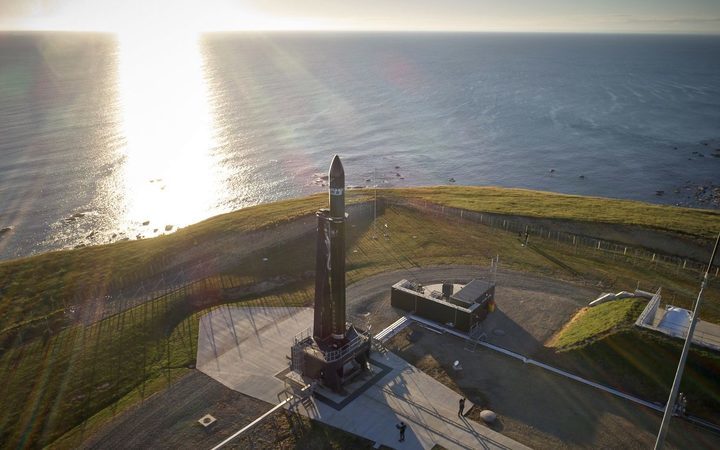
Rocket Lab's rocket at the launch site at Mahia Peninsula Photo: Supplied / Rocket Lab
It opened the 10-day launching window last Friday but high winds, an aborted launch, and a power fault have grounded attempts so far.
One attempt to launch the 17-metre rocket had to be aborted just two seconds from take-off.
It is the second of three test flights as the company prepares to become a commercial operation.
Rocket Lab says corrective measures were put in place for the power fault yesterday but with only one day left in the launch window it's decided to delay it until the New Year.
No firm date has been chosen.
During the first test flight, in May, the rocket made it to space but did not quite make it into orbit.
The flight ended four minutes in, with the rocket at a height of 224km, when engineers briefly lost contact with it, which forced them to terminate the mission.
Quelle: RNZ
+++
Rocket Lab delays launch until next year
After a week of waiting, Rocket Lab has called off the launch of its Electron rocket until early next year.
The high-tech Kiwi company's had been hoping for the second test launch of the rocket off the Mahia Peninsula but it has been delayed all week due to adverse weather and technical problems.
The company released a statement this evening saying the launch attempt was now being called off until early next year.
"Corrective measures have been put in place for the power fault discovered during ground checkouts yesterday, however, with only one day remaining in the launch window Rocket Lab has made the decision to delay an attempt until the new year."
New dates for attempted lift-off would be announced early in the new year, the statement said.
Yesterday's launch attempt was scrubbed following the identification of a power fault during ground checks.
High winds resulted in the launch being called off on Thursday and Tuesday's attempt was abandoned due to rising liquid oxygen (LOx) temperatures feeding into one of the rocket's nine engines -- just as it was about to take flight.
On Monday the launch was put off because of the proximity of the International Space Station and deteriorating weather.
In May, the New Zealand-founded company's first test rocket made it to space but the mission was terminated before it reached orbit because of a communication glitch.
If successful, the 17m Electron rocket will deliver small satellites to low Earth orbit at an unprecedented frequency.
Quelle: nzherald
---
Update: 30.12.2017
.
Rocket Lab says no to 'launch fever'
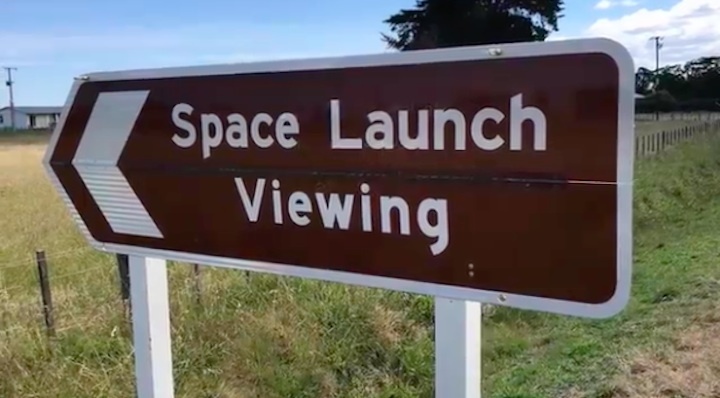

Rocket Lab says it will announce a new launch window early in the New Year after it failed to get its second test flight away before Christmas.
Founder and chief executive Peter Beck said the company was wary of ''launch fever'' and it wouldn't attempt another one from Mahia until it was ready.
During the 10-day launch window before Christmas, Rocket Lab on one day got within two seconds of blast-off before the vehicle automatically shut itself down because of the high temperature of liquid oxygen to one engine. A power fault to ground equipment resulted in a scrub on the second to last day and on other days it was affected by high altitude winds.
''We would love to launch during the window but this is the business we're in - this a standard day at work in the space industry,'' Beck said ''Windows come and windows close.''
He said the last second aborted lift-off proved systems were working.
''We came very close to lift-off but the machine was not 100 per cent happy and it shut itself down - it did exactly what it was supposed to do.''
The Electron rocket was not damaged and didn't need any repairs.
''There was no remediation needed at all. We were ready to roll the next day,'' he said.
The company would gather data from the attempts rather get drawn into pushing towards an arbitrary window.
''In the industry it's known as launch fever where you make decisions that aren't in the best interests of the vehicle or the mission.''
The Rocket Lab programme aims to take small satellites into orbit for a fraction of the cost of established overseas operators.
In May it successfully launched into space from Mahia but a communications glitch meant it had to be destroyed before reaching orbit.
Beck said the new regulators from the US and New Zealand would need to be on-site again during the next launch window and this added to the complexity.
During the launch attempts roads are closed and shipping is affected. He said locals had been understanding and supportive throughout the year.
''We're very lucky that they are very tolerant and very understanding - it's always great to see the excitement from the locals.''
Quelle: nzherald
---
Update: 12.01.2018
.

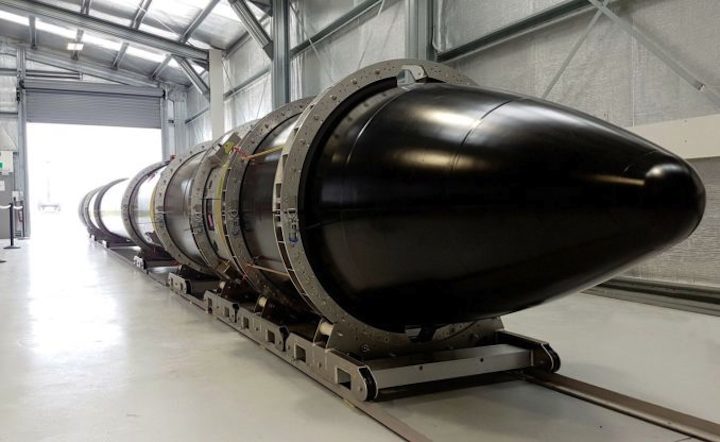
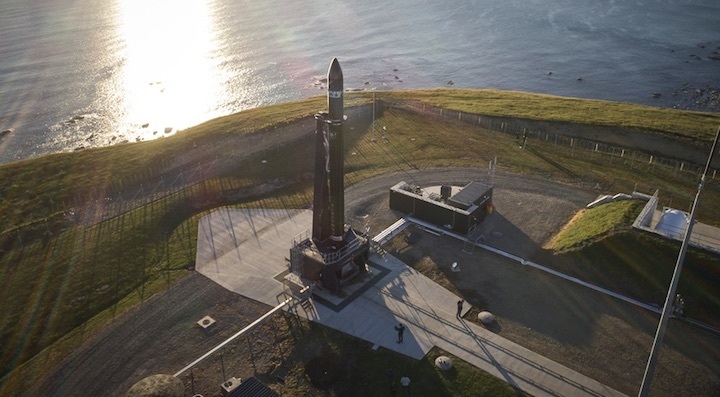



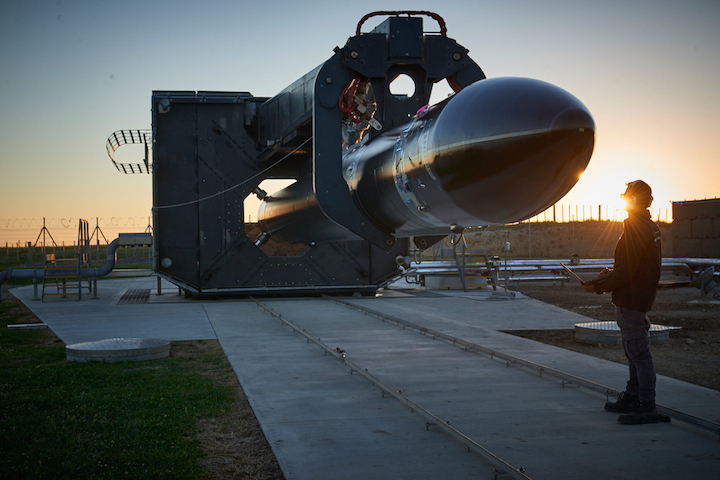
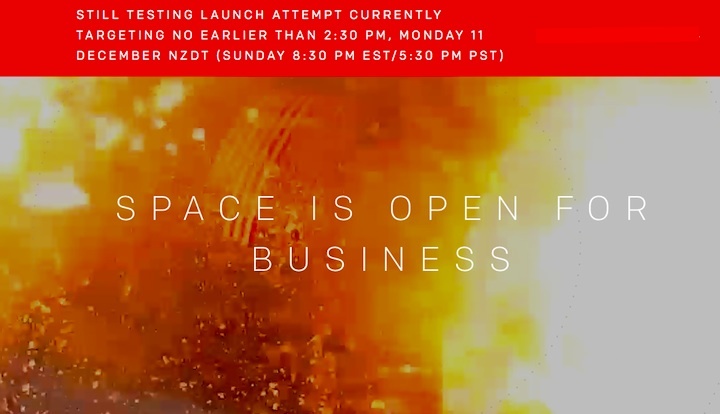

/cdn.vox-cdn.com/uploads/chorus_image/image/58290779/Rocket_Lab_D800E_ABG8786.0.jpg)